Resupinatus applicatus
Scientific name: Resupinatus applicatus (Batsch)
Gray
Derivation of name: Applicatus means "near" or
"attached" or "close" and likely refers to the absence
of a stipe and the appearence of the cap directly (closely)
attached to the wood.
Synonyms: Pleurotus applicatus (Batsch) P. Kumm.
Common name(s): Black jelly oyster, smoked oysterling.
Phylum: Basidiomycota
Order: Agaricales
Family: Tricholomataceae
Occurrence on wood substrate: Saprobic; scattered
or in
dense groups on the underside of deciduous logs or
growing laterally on standing stems and hanging branches;
June through
November.
Dimensions: Caps 2-8 mm wide.
Cap: Cup to saucer-shaped to fan-shaped; dark
bluish-gray to grayish-black; dry; hairy near point of
attachment.
Gills: Arising from point of attachment; whitish at first,
becoming blackish.
Spore print: White.
Stipe: Absent although a tiny, hump-like pseudostem is
present.
Veil: Absent.
Edibility: Unknown.
Comments: Identification of Resupinatus applicatus
is complicated by the presence of other
Resupinatus species
resembling it. For example,
compare suspected specimens of R.
applicatus
carefully against Resupinatus alboniger (see
website below). In addition, R. striatulus also occurs
is in the geographic region covered here. Ultimately,
microscopic examination of spores and other features
may be necessary for a positive identification.
Lacking
microscopic analysis, the specimens featured in Figures
3 to 7 are
identified
simply as Resupinatus.
More information at MushroomExpert.com:
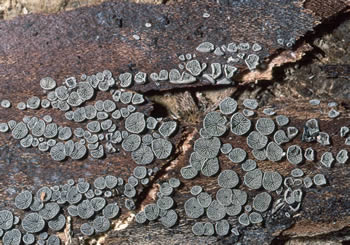
Figure 1. Clusters of black jelly oyster on a log. These
fruitbodies are very tiny and are often
not
likely to
be
found unless the
undersides of damp logs and branches
are
searched.
Photo © William Roody.
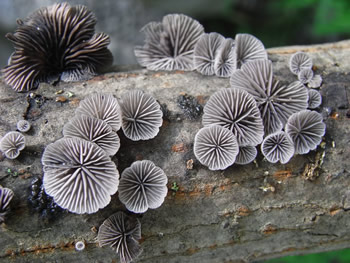
Figure 2. Note the manner in which the gills radiate from
the point of attachment of the cap to the wood.
Photo © Dorothy Smullen.
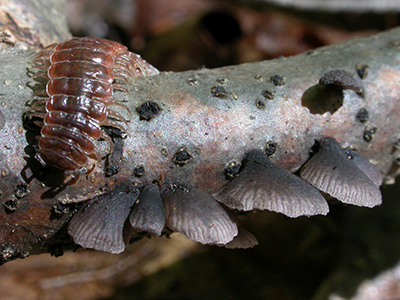
Figure
3. A flat-backed millipede (Polydesmus angustus) has
found its way onto a branch bearing several more laterally-
attached specimens of an unidentified Resupinatus species.
Photo © Gary Emberger.
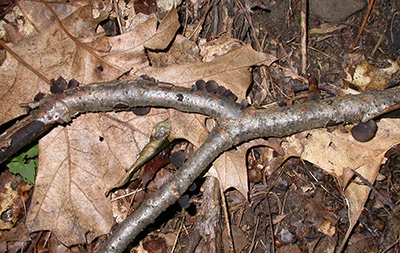
Figure 4. A small branch (note size of underlying oak leaves)
with several
Resupinatus specimens. Photo © Gary Emberger.
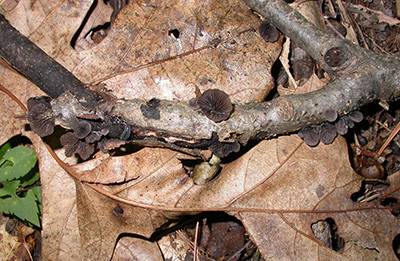
Figure 5. Same branch as in Figure 4 but flipped over.
Photo © Gary Emberger.
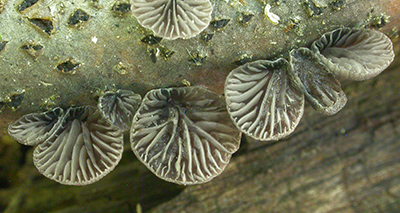
Figure 6. Closeup of the gills of the group of specimens at the
far right of the branch in Figure 5.
Photo © Gary Emberger.
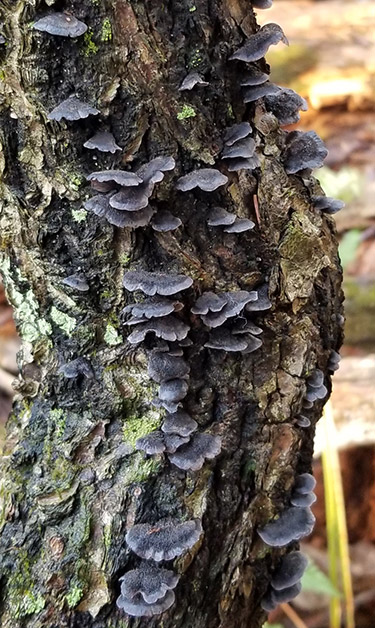
Figure 7. Unidentified Resupinatus species growing
on an
upright stem.
Photo © George Morrison.